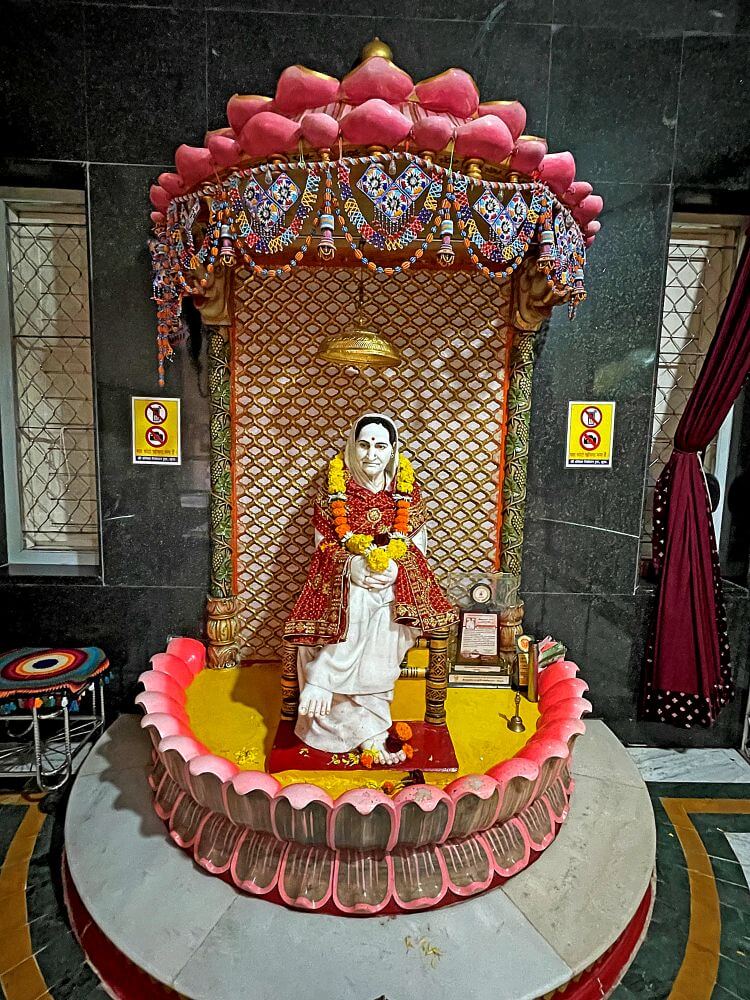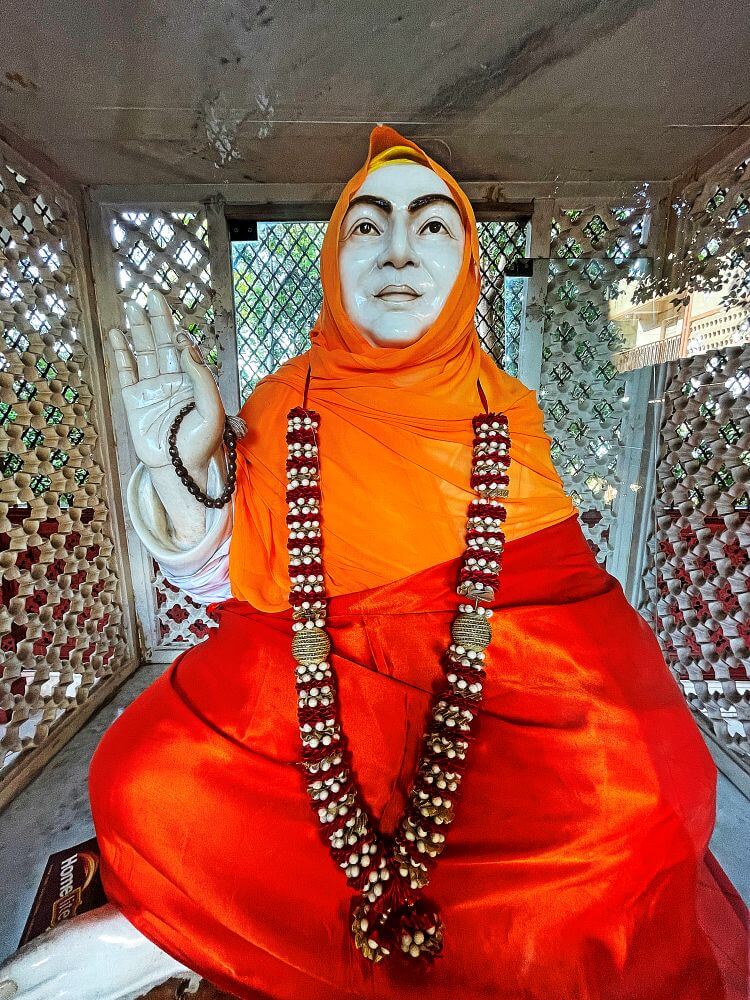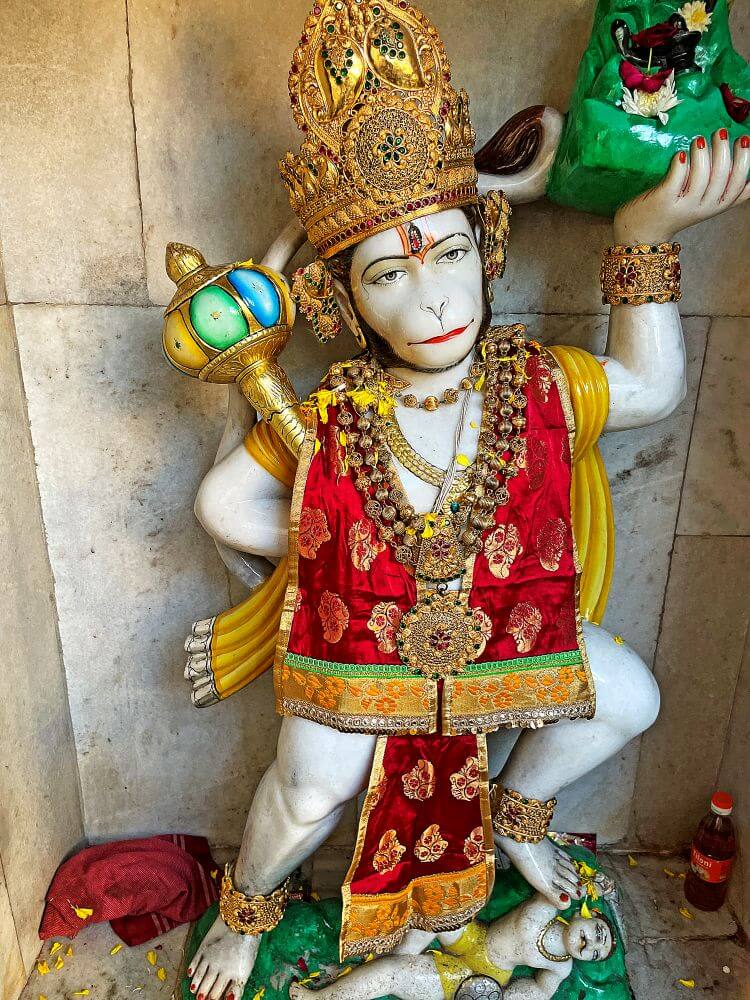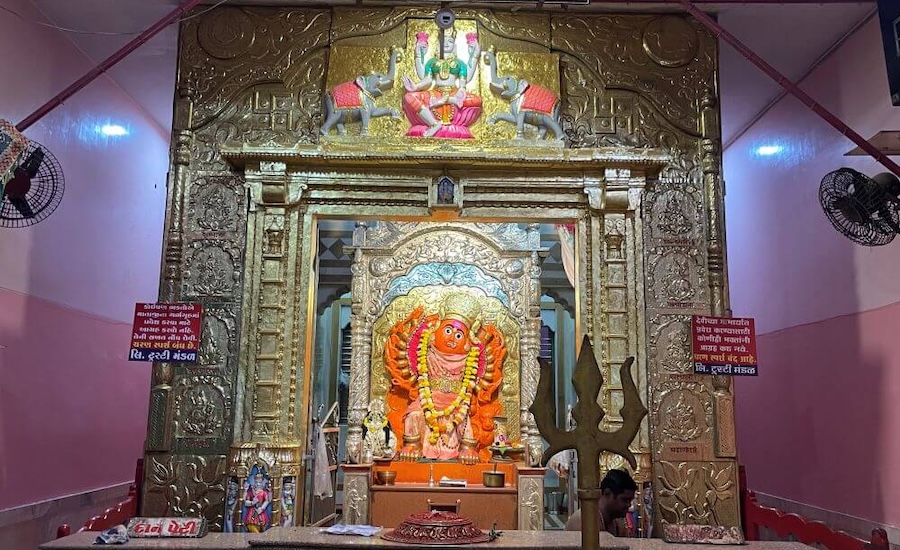 The Ambika Niketan Temple, located near the banks of the Tapi River in Surat, is popularly revered as the ‘Rajrajeshwari of Surat’. The goddess Ambika, enshrined in a posture of assurance (abhay mudra), is regarded as the protector deity of Surat. For devotees in Surat, this temple holds significance akin to a Shakti Peetha. Many begin their auspicious endeavors after seeking blessings from the goddess. Every day, over 3,000 devotees visit this temple to seek the darshan of Ashtabhuja Ambika Mata, the eight-armed goddess.
The Ambika Niketan Temple, located near the banks of the Tapi River in Surat, is popularly revered as the ‘Rajrajeshwari of Surat’. The goddess Ambika, enshrined in a posture of assurance (abhay mudra), is regarded as the protector deity of Surat. For devotees in Surat, this temple holds significance akin to a Shakti Peetha. Many begin their auspicious endeavors after seeking blessings from the goddess. Every day, over 3,000 devotees visit this temple to seek the darshan of Ashtabhuja Ambika Mata, the eight-armed goddess.
According to legend, in the 1970s, a devoted couple named Gyanu Bhai and Bharti Maiya moved to Surat from Ahmedabad. One night, Bharti Maiya had a vision of the goddess Ambika, who instructed her to construct a temple on the banks of the Tapi River. Initially hesitant due to their impoverished condition, Bharti Maiya ignored the dream. However, the goddess continued to appear in her dreams with the same instruction. Bharti Maiya finally confessed her financial constraints, to which the goddess replied, “Go from house to house and ask for one rupee for the temple; soon, the temple will be built.”
That same night, the goddess appeared in the dream of a wealthy landowner’s wife and directed her to donate land for the temple. The next day, the landowner’s wife approached Bharti Maiya and handed over documents for the land along the Tapi River. Inspired by this divine intervention, Bharti Maiya began collecting one rupee from households to fund the temple. With the contributions, additional land was acquired, and construction of the temple commenced. Before construction, a Lakshachandi Yagna (a grand fire ritual) was performed to sanctify the land. On Sunday, November 2, 1969, the consecration of the Ashtabhuja Ambika Mata idol was completed with great ceremony.
Inspired by this divine intervention, Bharti Maiya began collecting one rupee from households to fund the temple. With the contributions, additional land was acquired, and construction of the temple commenced. Before construction, a Lakshachandi Yagna (a grand fire ritual) was performed to sanctify the land. On Sunday, November 2, 1969, the consecration of the Ashtabhuja Ambika Mata idol was completed with great ceremony.
Located on Dumas Road, near Parle Point, the temple greets visitors with a grand archway. A row of shops selling flowers and offerings lines the approach to the temple. Within the temple complex, there is a Samadhi Mandir dedicated to Swami Madhavananda Maharaj, a revered ascetic. He is believed to have attained spiritual enlightenment and renounced his body at the age of 140. His mortal remains were given a jal samadhi (water burial) on August 22, 1972, at noon. A shrine housing his idol and sacred footprints (padukas) has been built in his memory.
The main two-storied temple structure is adorned with a prominent shikhara (spire). On the ground floor, in the assembly hall, the idol of the goddess riding a lion is flanked by statues of Gyanu Bhai and Bharti Maiya. The primary sanctum is located on the first floor, accessible via staircases on either side, with a small shrine of Lord Ganesha near the steps.
 The temple comprises a spacious assembly hall (sabhamandap) and a sanctum (garbhagriha). In the sanctum, a golden-decorated, intricately carved canopy enshrines the magnificent marble idol of Ashtabhuja Ambika Mata. The goddess is depicted with eight arms holding various divine weapons, including a trident (trishul), discus (chakra), sword, and shield. She wears resplendent attire and a golden crown, radiating grace and protection. Two lion statues are positioned on either side of the sanctum’s platform, symbolizing her vehicle.
The temple comprises a spacious assembly hall (sabhamandap) and a sanctum (garbhagriha). In the sanctum, a golden-decorated, intricately carved canopy enshrines the magnificent marble idol of Ashtabhuja Ambika Mata. The goddess is depicted with eight arms holding various divine weapons, including a trident (trishul), discus (chakra), sword, and shield. She wears resplendent attire and a golden crown, radiating grace and protection. Two lion statues are positioned on either side of the sanctum’s platform, symbolizing her vehicle.
The assembly hall houses idols of the Shiva family, Shri Ram Darbar, Lakshmi Narayan, Ashapura Devi, Dattatreya, and Khodiyar Devi. In a separate chamber, a gold-plated throne and cot are preserved as the goddess’s resting chamber (neejghar). A golden idol of the goddess and a large lion statue are also displayed here. From the circumambulatory path, visitors can enjoy a scenic view of the Tapi River.
The temple is open for darshan daily from 5:00 AM to 12:00 PM and 3:00 PM to 10:00 PM. Morning rituals include bathing and adorning the goddess, followed by an aarti. At 11:00 AM, royal offerings (rajbhog) are presented to all the deities in the temple. Evening sandhya aarti is performed at 7:00 PM. Throughout the year, the temple hosts a variety of religious programs. Festivals, especially Navratri, are celebrated with great fervor, attracting thousands of devotees.
The temple trust manages several social initiatives, including a hospital, an eye clinic, and an old-age home. A large gaushala (cow shelter) within the premises houses indigenous breeds such as Gir cows.



